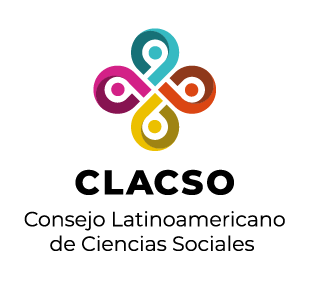Red de Bibliotecas Virtuales de Ciencias Sociales en
América Latina y el Caribe

Por favor, use este identificador para citar o enlazar este ítem:
https://biblioteca-repositorio.clacso.edu.ar/handle/CLACSO/252565Registro completo de metadatos
| Campo DC | Valor | Lengua/Idioma |
|---|---|---|
| dc.creator | Loaeza, Soledad | - |
| dc.date | 2022-03-20 | - |
| dc.date.accessioned | 2025-03-20T19:45:49Z | - |
| dc.date.available | 2025-03-20T19:45:49Z | - |
| dc.identifier | https://relasp.unr.edu.ar/index.php/revista/article/view/9 | - |
| dc.identifier | 10.35305/rr.v2i3.9 | - |
| dc.identifier.uri | https://biblioteca-repositorio.clacso.edu.ar/handle/CLACSO/252565 | - |
| dc.description | Since coming to power in 2018, Mexican president Andrés Manuel López Obrador (AMLO) launched a broad revision of all reforms introduced by five of his predecessors. This purpose has led him to attempt the restoration of the overpowerful presidency characteristic of the PRI regime. This policie have had a profoundly divisive effect on mexican society. The question remaining is whether AMLO’s next step will be the building of a hegemonic party along the lines of the PRI. This project would almost certainly meet with the determiend oposition of the Mexican electorate that has proven to be aware of the importance of political alternatives. This article explores the possibility of such a development in light of the successive electoral reforms that were at the heart of Mexico’s democratization. | en-US |
| dc.description | Desde su ascenso al poder en 2018, el presidente mexicano Andrés Manuel López Obrador, AMLO, lanzó una amplia revisión de todas las reformas que introdujeron cinco de sus predecesores. Este objetivo lo ha conducido a intentar la restauración de la muy poderosa presidencia del régimen de partido hegemónico. Esta política ha tenido un impacto profundamente divisivo en la sociedad mexicana. La pregunta que se plantea es si acaso el siguiente paso del presidente López Obrador es la construcción de un partido hegemónico similar al PRI. Este proyecto se toparía casi seguramente con la determinada oposición del electorado mexicano, que ha mostrado consciente de la importancia de alternativas políticas. Este artículo explora la posibilidad de que se produzca este desarrollo a la luz de las sucesivas reformas electorales que fueron el corazón de la democratización mexicana. | es-ES |
| dc.format | application/pdf | - |
| dc.format | text/html | - |
| dc.language | spa | - |
| dc.publisher | Universidad Nacional de Rosario | es-ES |
| dc.relation | https://relasp.unr.edu.ar/index.php/revista/article/view/9/6 | - |
| dc.relation | https://relasp.unr.edu.ar/index.php/revista/article/view/9/112 | - |
| dc.rights | https://creativecommons.org/licenses/by-sa/4.0/ | es-ES |
| dc.source | Revista Euro latinoamericana de Análisis Social y Político (RELASP); Vol. 2 Núm. 3 (2021); 81-98 | es-ES |
| dc.source | 2683-7420 | - |
| dc.subject | México | es-ES |
| dc.subject | Reformas | es-ES |
| dc.subject | Partidos Hegemónicos | es-ES |
| dc.subject | México | en-US |
| dc.subject | Reforms | en-US |
| dc.subject | Hegemonical Parties | en-US |
| dc.title | Mexican reforms and the risk of an authoritarian restoration | en-US |
| dc.title | Las reformas mexicanas y los riesgos de una restauración autoritaria | es-ES |
| dc.type | info:eu-repo/semantics/article | - |
| dc.type | info:eu-repo/semantics/publishedVersion | - |
| Aparece en las colecciones: | Secretaría de Investigación y Posgrado - SIP/UNR - Cosecha | |
Ficheros en este ítem:
No hay ficheros asociados a este ítem.
Los ítems de DSpace están protegidos por copyright, con todos los derechos reservados, a menos que se indique lo contrario.